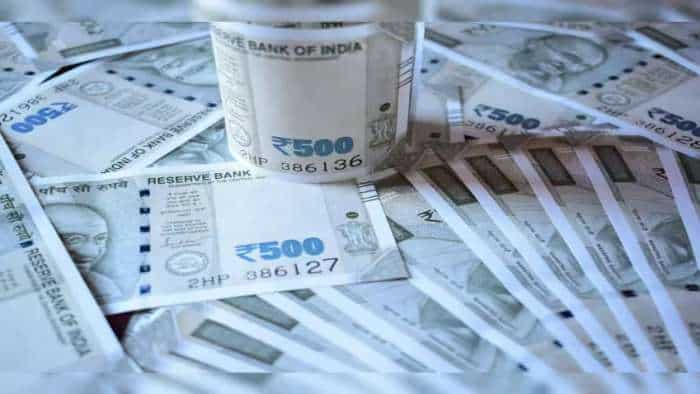China central bank leaves key policy rate unchanged under shadow of Federal Reserve
The PBOC said in its latest monetary policy implementation report that it would keep policy flexible to boost domestic demand, while maintaining price stability.
)
China's central bank left a key policy rate unchanged as expected on Sunday when rolling over maturing medium-term loans, with uncertainties around the timing of an easing by the Federal Reserve limiting Beijing's room to manoeuvre on monetary policy. Beijing is striking a delicate balancing act to support the economy at a time when signs of persistent deflationary pressure call for more stimulus measures. But any aggressive monetary movement risks reviving depreciation pressure on the Chinese currency and capital outflows.
With investors now pushing back the start of the Fed monetary easing to at least the middle of the year from March, following the latest U.S. data, traders and analysts expect China could hold back rolling out imminent stimulus. The People's Bank of China (PBOC) said it was keeping the rate on 500 billion yuan ($69.51 billion) worth of one-year medium-term lending facility (MLF) loans to some financial institutions unchanged at 2.50 per cent from the previous operation.
Sunday's operation was meant to "maintain banking system liquidity reasonably ample," the central bank said in an online statement. In a Reuters poll of 31 market watchers, 22, or 71 per cent, of all respondents expected the central bank to keep the borrowing cost of the one-year MLF loans unchanged on Feb. 18. With 499 billion yuan worth of MLF loans set to expire this month, the operation resulted a net 1 billion yuan fresh fund injection into the banking system.
Chang Wei Liang, FX & credit strategist at DBS, said the steady MLF rate comes as "policymakers' preference to anchor the yuan and limit negative rate differentials with the U.S. dollar."
Still, some investors and market watchers have ramped up their bets of more monetary easing measures in coming months to support the world's second largest economy after the central bank delivered a deep cut to bank reserves earlier this month.
The PBOC said in its latest monetary policy implementation report that it would keep policy flexible to boost domestic demand, while maintaining price stability. "We continue to expect two rounds of rate cuts in Q1 and Q2, with 15 basis points each to both the open market operations (OMO) and MLF rates," Ting Lu, chief China economist at Nomura, said in a note ahead of the loan operation. He added that the latest round of easing measures, including an earlier-than-expected reserve requirement ratio (RRR) cut, "failed to stabilise market sentiment".
The central bank-backed Financial News, reported on Sunday citing market watchers that the benchmark loan prime rate (LPR) could fall in the coming days, with a five-year tenor more likely to be reduced. "Lowering five-year LPR will help stabilise confidence, promote investment and consumption, and also help support the stable and healthy developments of the real estate market," the newspaper said on its official WeChat account soon after the MLF rate decision. Most new and outstanding loans in China are based on the one-year LPR, while the five-year rate influences the pricing of mortgages. The monthly fixing of the LPRs is due on Feb. 20.
Get Latest Business News, Stock Market Updates and Videos; Check your tax outgo through Income Tax Calculator and save money through our Personal Finance coverage. Check Business Breaking News Live on Zee Business Twitter and Facebook. Subscribe on YouTube.
RECOMMENDED STORIES

Highest Senior Citizen FD rates: See what major banks like SBI, PNB, Canara Bank, HDFC Bank, BoB and ICICI Bank are providing on special fixed deposits

5X15X25 SIP Strategy: Is it possible to create Rs 1,64,20,369 corpus with Rs 5,000 monthly SIP investment?

Power of Compounding: In how many years, investors can achieve Rs 6.5 cr corpus with monthly salaries of Rs 20,000, Rs 25,000, and Rs 30,000?

Top 7 Sectoral Mutual Funds With Best SIP Returns in 1 Year: No. 1 scheme has converted Rs 34,567 monthly SIP investment into Rs 5,40,565; know about others

SBI Green Rupee Deposit 2222 Days vs Canara Bank Green Deposit 2222 Days FD: What Rs 7 lakh and Rs 15 lakh investments will give to general and senior citizens; know here
09:07 AM IST









 India-China troops begin disengagement at 2 friction points in Ladakh
India-China troops begin disengagement at 2 friction points in Ladakh China emerges as India's top import source during April-September 2024
China emerges as India's top import source during April-September 2024 Canada imposes a 100% tariff on imports of Chinese-made electric vehicles Toronto
Canada imposes a 100% tariff on imports of Chinese-made electric vehicles Toronto China's exports grow 7% in July, under forecasts, while imports gain momentum
China's exports grow 7% in July, under forecasts, while imports gain momentum Paris Olympics: China win gold medal in 10m Air Rifle Mixed Team event
Paris Olympics: China win gold medal in 10m Air Rifle Mixed Team event